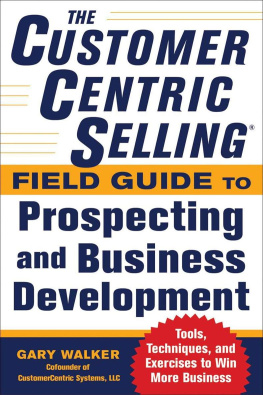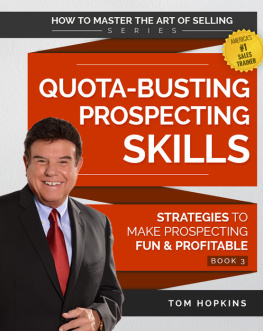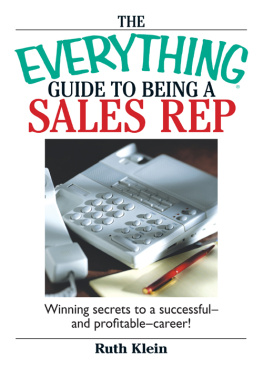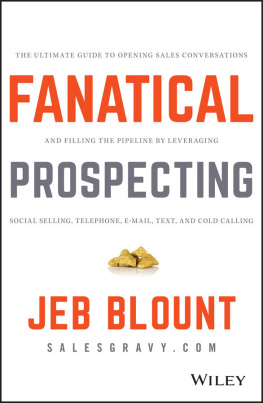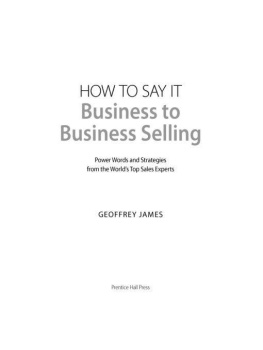

Copyright 2013 by McGraw-Hill Education. All rights reserved. Except as permitted under the United States Copyright Act of 1976, no part of this publication may be reproduced or distributed in any form or by any means, or stored in a database or retrieval system, without the prior written permission of the publisher.
ISBN: 978-0-07-180806-4
MHID: 0-07-180806-X
The material in this eBook also appears in the print version of this title: ISBN: 978-0-07-180805-7, MHID: 0-07-180805-1.
All trademarks are trademarks of their respective owners. Rather than put a trademark symbol after every occurrence of a trademarked name, we use names in an editorial fashion only, and to the benefit of the trademark owner, with no intention of infringement of the trademark. Where such designations appear in this book, they have been printed with initial caps.
McGraw-Hill Education eBooks are available at special quantity discounts to use as premiums and sales promotions, or for use in corporate training programs. To contact a representative please e-mail us at bulksales@mcgraw-hill.com.
Product or brand names used in this book may be trade names or trademarks. Where we believe that there may be proprietary claims to such trade names or trademarks, the name has been used with an initial capital or it has been capitalized in the style used by the name claimant. Regardless of the capitalization used, all such names have been used in an editorial manner without any intent to convey endorsements of or other affiliation with the name claimant. Neither the author nor the publisher intends to express any judgments as to the validity or legal status of any such proprietary claims.
TERMS OF USE
This is a copyrighted work and McGraw-Hill Education and its licensors reserve all rights in and to the work. Use of this work is subject to these terms. Except as permitted under the Copyright Act of 1976 and the right to store and retrieve one copy of the work, you may not decompile, disassemble, reverse engineer, reproduce, modify, create derivative works based upon, transmit, distribute, disseminate, sell, publish or sublicense the work or any part of it without McGraw-Hill Educations prior consent. You may use the work for your own noncommercial and personal use; any other use of the work is strictly prohibited. Your right to use the work may be terminated if you fail to comply with these terms.
THE WORK IS PROVIDED AS IS. McGRAW-HILL EDUCATION AND ITS LICENSORS MAKE NO GUARANTEES OR WARRANTIES AS TO THE ACCURACY, ADEQUACY OR COMPLETENESS OF OR RESULTS TO BE OBTAINED FROM USING THE WORK, INCLUDING ANY INFORMATION THAT CAN BE ACCESSED THROUGH THE WORK VIA HYPERLINK OR OTHERWISE, AND EXPRESSLY DISCLAIM ANY WARRANTY, EXPRESS OR IMPLIED, INCLUDING BUT NOT LIMITED TO IMPLIED WARRANTIES OF MERCHANTABILITY OR FITNESS FOR A PARTICULAR PURPOSE. McGraw-Hill Education and its licensors do not warrant or guarantee that the functions contained in the work will meet your requirements or that its operation will be uninterrupted or error free. Neither McGraw-Hill Education nor its licensors shall be liable to you or anyone else for any inaccuracy, error or omission, regardless of cause, in the work or for any damages resulting therefrom. McGraw-Hill Education has no responsibility for the content of any information accessed through the work. Under no circumstances shall McGraw-Hill Education and/or its licensors be liable for any indirect, incidental, special, punitive, consequential or similar damages that result from the use of or inability to use the work, even if any of them has been advised of the possibility of such damages. This limitation of liability shall apply to any claim or cause whatsoever whether such claim or cause arises in contract, tort or otherwise.
Contents
Acknowledgments
Writing a book is a time-consuming endeavor made even more challenging when you have a number of other things that require ongoing attention, including the subject of this bookprospecting and business development! For that reason, Id like to thank Tim Young for helping to keep me on task throughout this project. Likewise, Im grateful to Jill Perez, our director of marketing, who worked tirelessly to review my work, add to the content as needed, perform research, and edit and clarify my attempts at checkpoints and tests. Her efforts have helped to make this field guide a better resource for you, the reader. I am grateful to both Tim and Jill for their help.
Introduction
My partners and I have been pleasantly surprised by the success of CustomerCentric Selling over the past decade. Tens of thousands of sales professionals have improved their selling skills by attending our workshops or by practicing the principles outlined in the first and second editions of our book CustomerCentric Selling , published by McGraw-Hill. Yet the enthusiastic response from readers and workshop attendees masked a need that I felt was lacking in the original CustomerCentric Selling methodology, a need that I would argue is among the most important skills a salesperson can have.
Im referring to prospecting and business development.
That statement comes as no surprise to the thousands of salespeople who struggle to meet their sales quotas. After all, its hard to close a sale without a prospect! Yet in this enlightened age of communication overloadwith so many ways to tweet, update, text, and check in with othershow does one go about breaking into a new company to close that elusive sale?
Consider, for instance, that 92 percent of C-level executives never respond to e-mail blasts or cold calls. If you have been using e-mail or cold calls in an effort to win business, this fact may not come as a surprise to you. The reality is that this statistic, which comes from a paper entitled Selling to Senior Executives, published by the Kenan-Flagler Business School at the University of North Carolina, has been rising and is likely to continue rising.
Pretty scary stuff, especially if you rely on either of these methods in an effort to generate new business from senior executives. Is it any wonder why salespeople loathe cold-call prospecting and business development? Senior executives resent the intrusion of the calls almost as much as salespeople despise making them. Being so uncomfortable on both sides of the table is no way to begin any relationship!
The frightening thing is that despite these findings, the salespeople who actually do actively prospect (those who dont just sit back and wait for marketing to provide them with a lead or for the phone to ring) continue to rely on cold calling and e-mail as their primary methods of prospecting and new business development. As a matter of fact, many companies require their salespeople to make some number of cold calls on a daily basis as one of their performance criteria. In essence then, they are being required by their employer to annoy prospective customers!
In the midst of writing this Introduction, I received an e-mail blast from an organization wanting to know if I would like to become a better cold caller . Now, knowing what I know, why would I want to improve at doing something that prospects report that they want no part of? Making my future customer displeased with me is not the way I want to begin a relationship.
Throughout this book and in our public workshops, I share additional insights on the effectiveness of cold calling as determined by other organizations. As for the effectiveness of e-mail, I believe that many salespeople hide behind it in an attempt to demonstrate that they are prospecting. They need to show that they are doing something . E-mail is safe, easy, and benign, and it does not subject the salesperson to personal rejection when the prospect simply drags it into the trash folder. However, it is not effective unless you are e-mail-blasting many thousands of faceless prospects and you are comfortable with the fact that, while your e-mail just annoyed over 90 percent of them, the few that do respond can keep your business going or help you to meet your quota.
Next page
